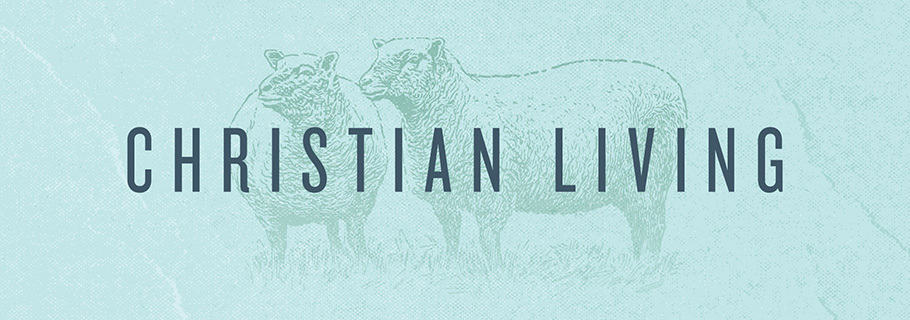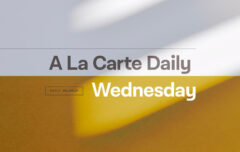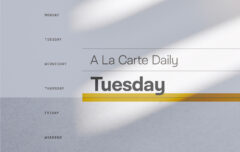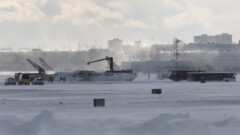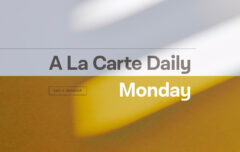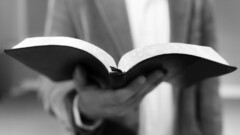In the past week or two I have been thinking a lot about my times of personal devotion, trying to see where I have allowed them to become just the “same old”–where I may have fallen into bad habits or lazy customs. I have been thinking about what I can do to make these times that will serve to help me grow in godliness while at the same ensuring that they are opportunities to bring worship to God. This is something I find that I need to do on a regular basis. My reflections on prayer coincided with reading 1 Timothy in my times of personal worship. In 1 Timothy we read Paul’s command that “in every place the men should pray, lifting holy hands without anger or quarreling.” This set me to thinking about the posture of prayer. The chapter has quite a few things to say about the content of prayer (e.g. “I urge that supplications, prayers, intercessions, and thanksgivings be made for all people…”) but it also includes these words about posture, the actions of a person’s body in prayer. I began to think about how I pray; not just the words, but also the posture.
Of course we need to affirm that God is far more concerned with the content of our prayers than the posture of our prayers. It is far more important to examine the heart than to examine the feet or the hands. At the same time, there is no doubt that our bodies can be an expression of our hearts (as you see when you shake your fist at the car that cut you off or when you clap your hands at the end of an inspired performance). And so it is useful, I think, to examine what the Bible says about our bodies during prayer.
I turned to Philip Ryken’s excellent commentary on 1 Timothy and found that he highlights several of the ways the Bible tells us to pray. I will summarize them just briefly, hoping that you find it useful, as I have.
Bowing
The Bible, and the Psalms especially, describe bowing during prayer. This is a posture we often use today and one we teach our children when we tell them to bow their heads (out of respect) and to fold their hands (probably out of respect and so they do not fidget!). Psalm 5 says “I will bow down toward your holy temple in the fear of you” while Psalm 95:6 says “Oh come, let us worship and bow down; let us kneel before the Lord, our Maker!” Bowing is a sign of respect and honor. Even today we may bow toward a king or dignitary, expressing in that action our respect for that person.
Kneeling
The Bible mentions several people who knelt during prayer, among them Daniel (Daniel 6:10) and Stephen (Acts 7:60). And of course Jesus himself knelt to pray in the Garden of Gethsemane. He “withdrew from them about a stone’s throw, and knelt down and prayed” (Luke 22:41). Kneeling is a sign of humility and a sign of dependence. A person might kneel in the presence of a king or queen and he would do so as a sign of his deference to that person. It is difficult to be proud when kneeling before another. And so kneeling is a very natural posture for the Christian as he prays to the Lord. It seems a very natural position for bringing petitions to God, acknowledging God’s superiority and our utter dependence on him.
Standing
The Bible often mentions people standing to pray in public worship. When Solomon dedicated the temple, he knelt before God to pray while all the people stood (Chronicles 6:3, 13). In the same vein, Jehoshaphat “stood in the assembly of Judah and Jerusalem, in the house of the Lord” (2 Chronicles 20:5). It became customary for Jewish people to stand for prayer while in their synagogues. Such posture has roots in the Christian faith as well. Ryken shows that Justin Martyr, Origen, Jerome and Augustine all wrote of standing for public prayer. Today we stand in the presence of a judge when he enters his court room. Until recently students would stand when their professor entered the room. And, until recent days, many churches encouraged people to stand during prayer. Standing is, of course, a sign of respect. We stand in the presence of those we respect (or at least as a sign of our respect for their position or their authority). And so standing for prayer is a natural position especially for times of corporate prayer as the people stand in God’s presence out of respect for his authority.
Lying Prostrate
Scripture also mentions people praying flat on the ground with their faces pressed to the earth. Moses fell in the presence of the Lord (Numbers 16:22, 20:6) as did Joshua (Joshua 5:14). Job fell to the ground and worshiped when he was in the depths of his despair. And, of course, the angels and elders who pray before God’s heavenly throne fall on their faces. “And all the angels were standing around the throne and around the elders and the four living creatures, and they fell on their faces before the throne and worshiped God, saying, “Amen! Blessing and glory and wisdom and thanksgiving and honor and power and might be to our God forever and ever! Amen.”” (Revelation 7:11). This is a sign of utter respect. A man may fall to the ground before another person when that other person has absolute power of life or death. To do so is to acknowledge one’s absolute unworthiness and to beg the grace of the other person. And so in prayer laying prostrate is a natural position for those who are overwhelmed either by trouble and woe or by a sense of the glory and majesty of God (or both!).
Hands Raised
And Scripture describes those who raise their hands in prayer. This was the way the priests worshiped in the temple (Psalm 134, 141, etc). And from extra-Scriptural sources we know that raising hands in prayer was customary in the early church. Ryken quotes Tertullian who said, “We Christians pray for all emperors, &c., looking up to heaven, with our hands stretched out, because guiltless; with our heads uncovered, because we are not ashamed.” Early Christian artwork often portrays those who prayed doing so with their hands raised. Such a posture signifies praise. Think today of a rock concert where people may raise their hands toward the stage in what looks almost like an act of praise and worship. And, of course, many Christians raise their hands when they sing, using this as a physical manifestation of their praise. Raising hands is appropriate in prayer especially during times of praising God. Ryken says “This posture is especially appropriate for the minister who leads in public prayer. When he stands in God’s presence to offer prayer on behalf of God’s people, he may raise his hands to show that the church’s prayers are offered to God as a sacrifice of praise.”
Nowhere does the Bible command us that we must set our bodies in one position or another during prayer. Yet it does describe a variety of positions that each have their own significance. You may find it useful to practice some of these postures in your times of private prayer, allowing that posture to be a reflection of your heart, whether it is a heart overwhelmed with the cares of life, a heart rejoicing in the majesty of God or a heart quieted in humble obedience to God.
